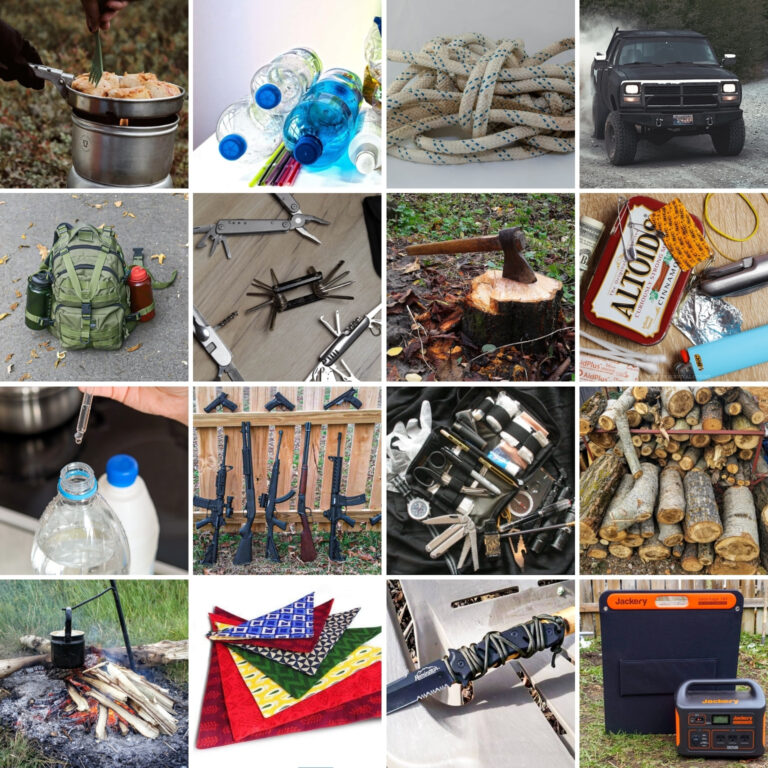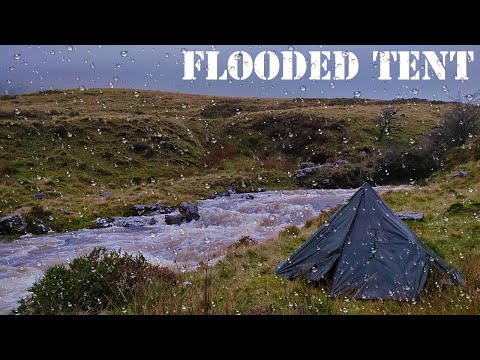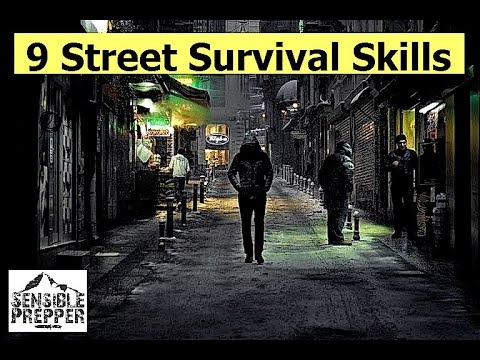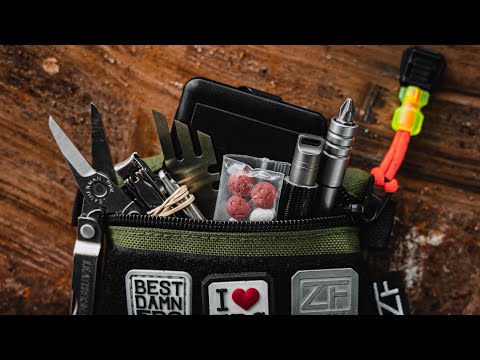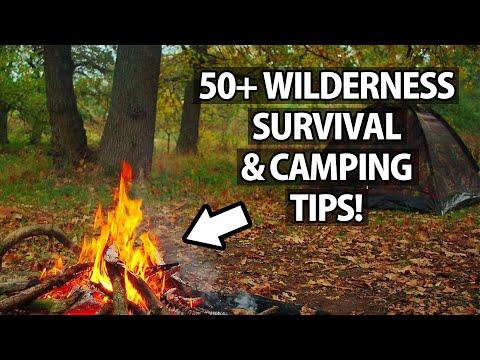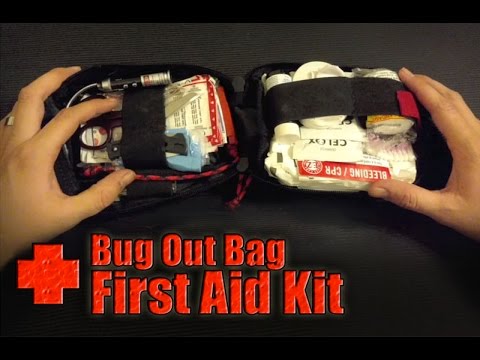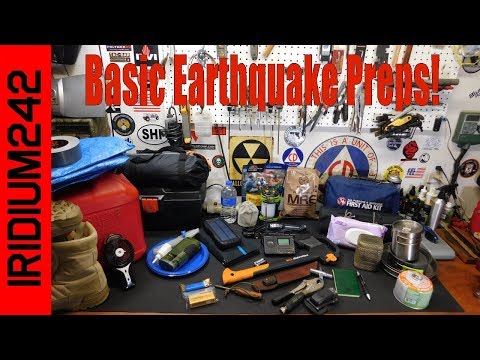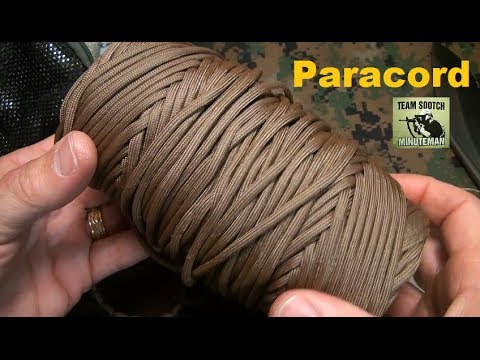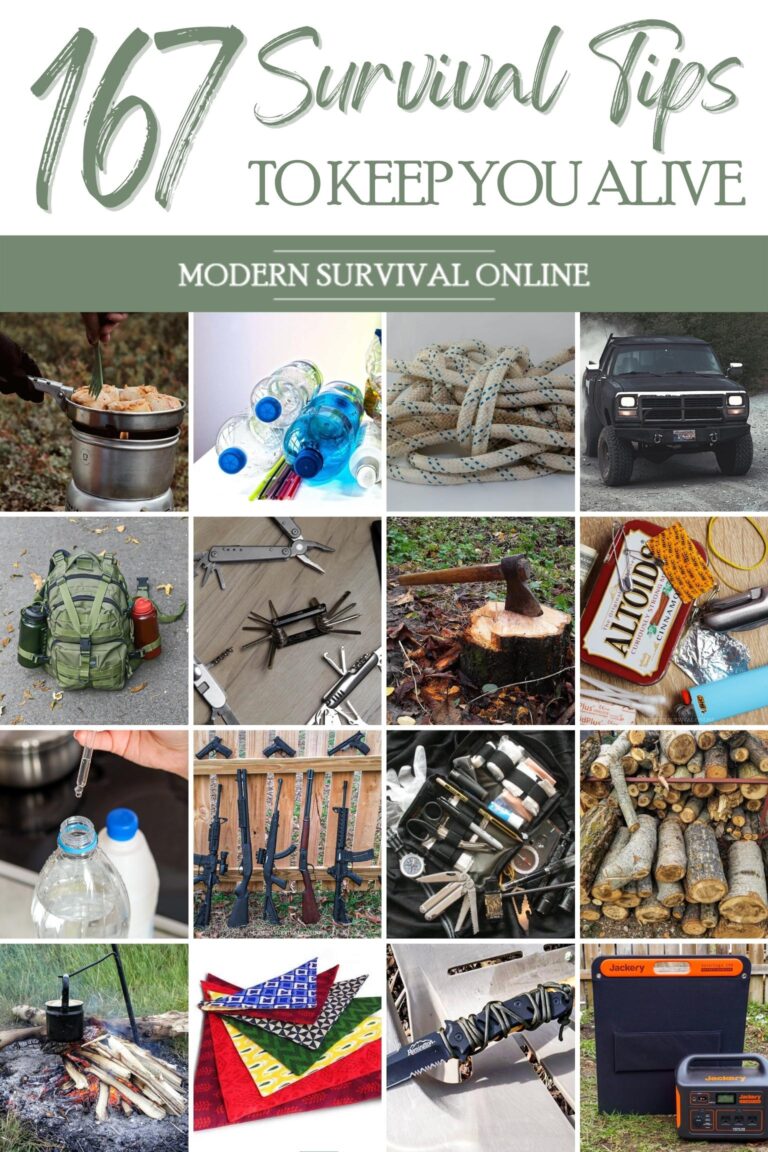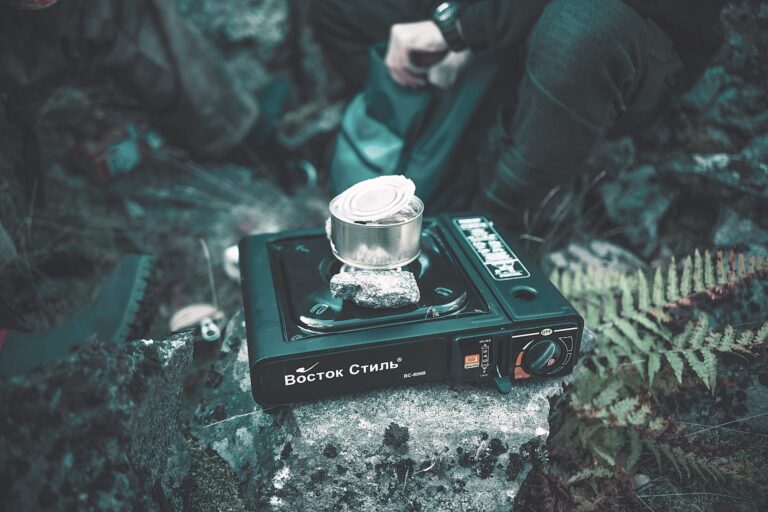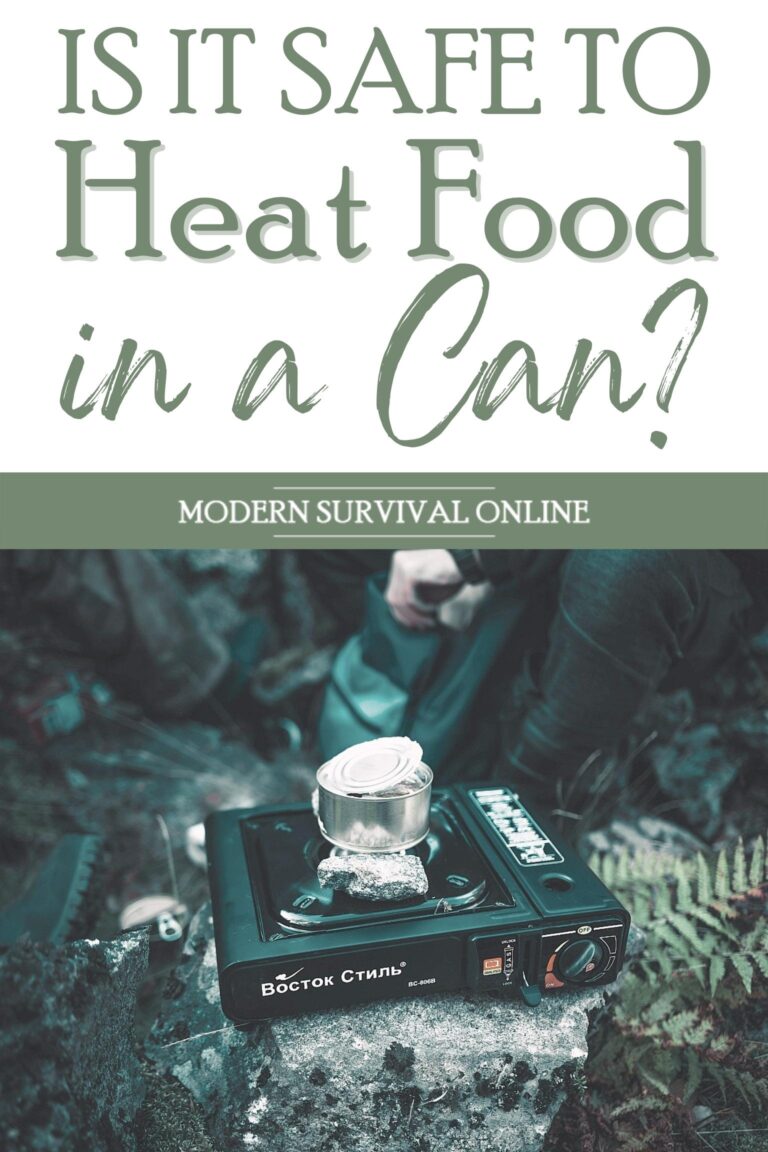One of the most important tools in a prepper’s arsenal is their vehicle.
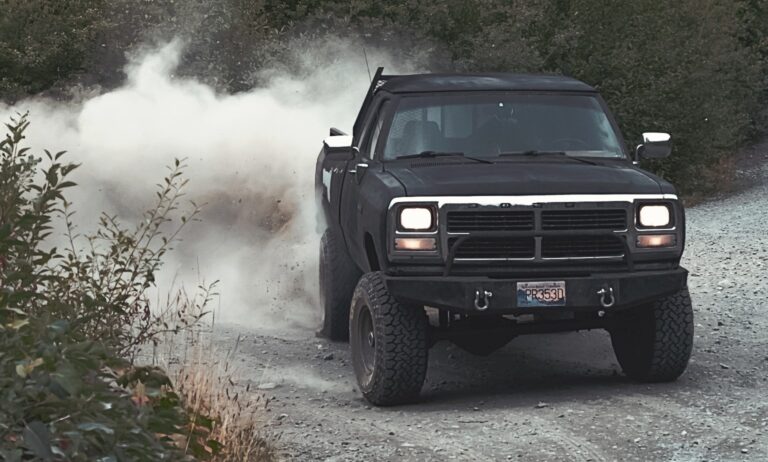
Serving as a conveyance for evacuation or bugging out, a prime mover for mass amounts of cargo or a taxi to get you and your group where you are needed, when you are needed, it is difficult to overstate the flexibility and freedom afforded to people who have their own ride.
And out of all the many vehicles you can own, I would argue that there are none so capable and so versatile in so many domains as the common pickup truck.
When it comes to towing or just hauling massive, bulky or heavy cargo, nothing beats a pickup truck among typical consumer vehicles. Most even have some off-road capability in the bargain for maximum mobility over any terrain.
For those of us who drive pickups, it is possible to turn them into a mobile store room capable of fulfilling all of your prepping objectives with the inclusion of some smart supplies, gear, and tools.
In this article, we will cover a list of 15 must-have items for vehicle everyday carry specifically for trucks.

Your Truck is Your Mobile Base of Operations
Your daily driver truck or specialized, purpose-built bug-out rig can serve as a mobile base of operations and Supply point no matter what kind of disaster you are facing.
Trucks have the carrying capacity and all-around capability the handle pretty much everything.
if you get into an accident or come upon the scene of another accident where you might render aid, your truck can carry the needed recovery tools and supplies to get a vehicle unstuck, or help you conduct repairs well enough to get going down the road again.
Your truck can also serve as a mass people hauler in the event that evacuations are required so long as you drive safely and at low speed.
And your truck can do so much more, from providing you with additional supplies to help you sustain and survive, to functioning as a towing vehicle for another vehicle or a trailer that is similarly equipped.
Cars may be fine and SUVs certainly have their own advantages, but nothing is as capable or as comfortable in a variety of hardcore situations as a pickup truck.
By the way, when you are considering the list below keep in mind that these items represent ones that I have found to be perennially useful in pretty much every environment and in every setting.
Even so, it cannot account for all the many variations and people’s lifestyles and objectives, so if you find that any of them are flat out not a good fit for your needs, delete them!
15 Truck EDC Items to Have
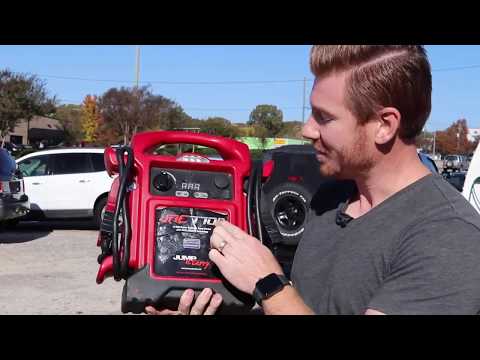
Jumper Box
A jumper box at its simplest is basically a battery with an attached, short pair of leads that will allow you to jumpstart your own truck or someone else’s vehicle without need of attaching jumper cables to each vehicle.
These are just the ticket for being completely self-sufficient wherever you happen to be.
A dead or dying battery is an extremely common occurrence when it comes to component failure, and it will still immobilize your truck like anything else.
To get even more capability out of this inclusion, look for a model that features a built-in air compressor, wide area work light and even charging ports for cell phones, power banks and other mobile devices.
This can allow your jumper box to serve as your full-time power hub when on the road.
One word of advice, however. Not all these devices are created equal, and many of them, sadly, are pretty low quality and will not hold a charge at all for very long.
Having to babysit what should be a standby piece of emergency equipment is a pain in the butt and will increase your workload, so take the time to research which brands have the capacity and the longevity to free you from the constant need to put it in your truck and take it out.
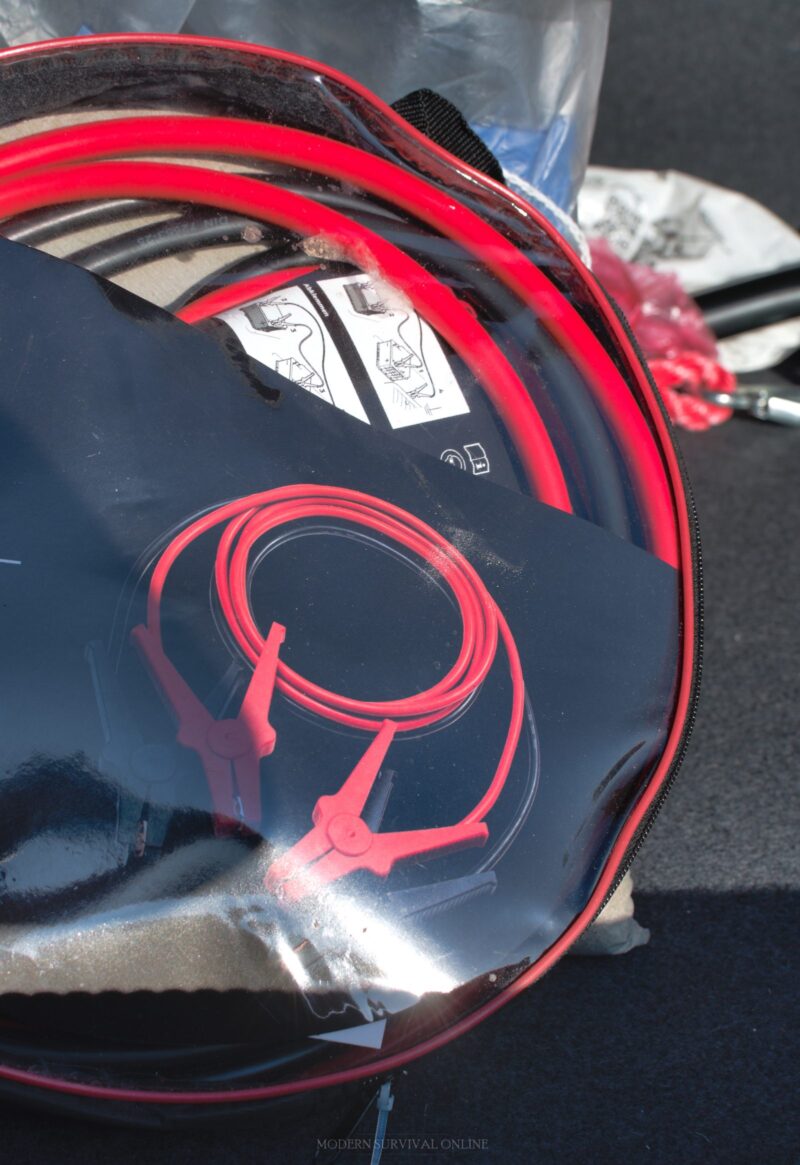
Jumper Cables
Just because you carry a jump box that does not mean you should omit jumper cables.
This is a universally useful contingency tool that, surprisingly, quite a few people still do not habitually carry and that is a shame especially if they are preppers.
Jumper cables will do the job in cases where a jump box is either out of power or underpowered for the task, and this is an item that every single driver should know how to use safely.
But when it comes to trucks, which typically make use of bigger engines and correspondingly larger batteries than typical sedans and other passenger cars, you’ll need correspondingly tough jumper cables.
Your jumper cables should be of a heavier gauge than normal with all copper clamps and of extended length.
The larger engine bays and ride height of trucks can make getting another vehicle close enough to effectively attach standard jumper cables challenging.
this is one of those tools that, if you are lucky, you will not need very often but even so make sure you check up on your cables regularly.
Rubber coatings can crack and split and copper can oxidize, hampering the efficiency of your cables or even creating an unsafe condition. Take care of your truck EDC tools and they will take care of you.

Farm Jack
The farm jack, also known as a high-lift jack, is that long, slender, skeletonized apparatus that you will commonly see bolted to the hood or tailgate of dedicated off-road vehicles and lifted pickup trucks everywhere.
As you might expect, these jacks are capable of lifting a load much higher than a typical floor jack or bottle jack often included in consumer vehicles and are necessary for safely and effectively lifting tall pickup trucks and other vehicles that ride on high suspensions.
Beyond these utilitarian tasks, the farm jack is a wonderfully powerful multi-purpose tool that no prepper should go without.
With a little bit of skill, you can also use a farm jack as a powerful spreader, akin to manually operated jaws of life, a come-along and more.
However, you must be cautious when using this potent tool because they are notoriously fickle and can easily injure you if the jack or the load that it is hoisting slips.
The long, ratcheting handle can recoil under certain conditions and severely injure you, and everyone who knows someone that routinely uses a jack like this has probably heard a horror story of just such an occurrence. Treat this tool with respect, and it will treat you well!
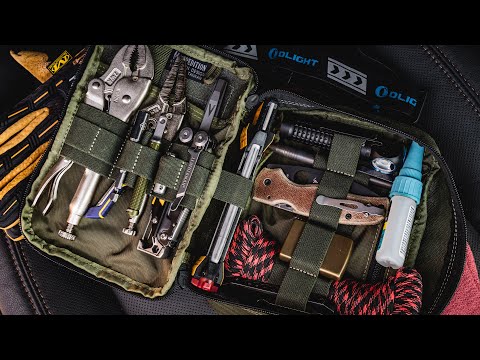
Emergency Tool Kit
No truck should be without its own dedicated emergency tool kit, consisting of hand tools and supplies needed to correct common automotive breakdowns and mishaps.
A mechanic’s complement of ratchets, wrenches, pliers, sockets and other common automotive tools is a necessity, as is a sturdy, two-sided mallet for loosening or adjusting recalcitrant parts.
This kit should also include a variety of lubricants and fluids that the vehicle requires for operation and you may require for getting the job done.
Penetrating lubricant, motor oil, a bottle of coolant, brake fluid and some spare parts like bulbs, belts and fuses can turn what would be a show stopping mishap into a minor inconvenience.
Also, don’t forget to include the ever useful roll of duct tape. Duct tape can hold smashed body work together, reinforce cracked windshields and seal up holes that would otherwise let in water.
Don’t underestimate this stuff, and make sure you spring for the good kind that has a strong fabric backing and powerful adhesive that is perfect for automotive use.
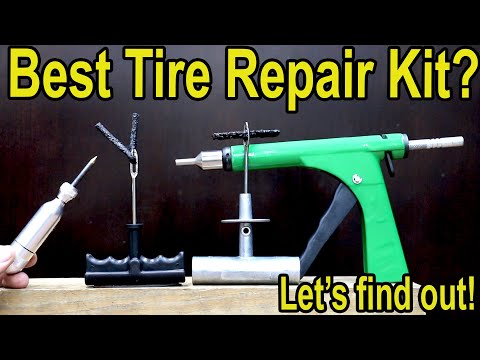
Tire Repair Kit
Second, only to a dead battery, a flat tire is the most likely component failure you’ll experience in any vehicle, even one so strong and capable as your pickup truck.
Although most pickup trucks carry a full-size spare tire, and this is wise, sometimes you might be in a situation where you must deal with more than one flat or a subsequent flat that renders your truck down a tire no matter what.
Most tire punctures thankfully go through the tread, and typically occur from some long and slender sharp object, a screw, nail, strong piece of wire and so on.
It is possible to effectively repair this type of puncture in the field much of the time so long as the tire has useful service life remaining. A tire repair kit will help you take care of business.
A tire repair kit consists of tools designed to help you remove the hazard, clean up the edges of the hole and then insert and set a sticky, resinous plug that can then be trimmed off flush with the surface of the tread, closing the hole and hopefully sealing it so that it may be reinflated.
Note that most tire repair kits are in no way suitable for repairing major holes or any puncture that goes through the sidewall of the tire, though certain specialized kits for overlanding or off-roading might be capable of such a repair in the field.
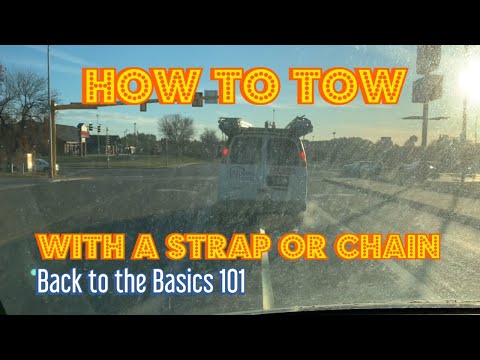
Tow Chain or Tow Straps
Let’s face it, when you use a tough vehicle the way that God and the designer intended you are eventually going to come into a situation where you get stuck.
Maybe it was an ill advised off-road maneuver or maybe your vehicle just wasn’t up to the task of crossing some truly treacherous terrain, or perhaps still you simply skid off of the road due to slick conditions or an emergency maneuver to avoid an obstacle.
Whatever the case, your truck is now stuck and must be pulled free.
This is where another vehicle, or your vehicle if you are the Good Samaritan, can help to pull another out of its predicament by using appropriately rated chains or towing straps.
So long as a vehicle has an appropriate hardpoint to connect to, either will do the job.
It should be noted that both have advantages and disadvantages, but tow straps are far lighter, significantly more compact and much safer in use compared to chains.
Whichever one you choose, make sure you learn how to use them and the proper procedure for self-recovery or recovering another truck.

Traction Boards
Traction boards are yet another invaluable vehicle recovery tool, and one of the best and overall most effective for self-recovery.
If your truck should bog down and mud, sand or snow you can use traction boards to increase the overall patch of contact of your tires on the surface below, and many have an aggressive, studded texture to help the tire grip them.
In use, these could hardly be easier or quicker to employ as all one has to do is dig out a little bit of terrain ahead of the tire or behind them before wedging the leading edge of the traction board beneath the tire and then gently rolling the vehicle and whichever direction is appropriate for extrication.
In use, this might result in an inchworm type movement as the driver or someone assisting might need to continually relay the road using the traction boards, but they are generally sure and simple in use.

Tarps
No truck loadout can be considered complete without a couple of heavy duty tarps on board.
You can use tarps as intended to cover any exposed load carried in the bed, or create a shelter for yourself in the bed when parked, but tarps are also an invaluable, multi-purpose survival tool that any prepper would be glad to have on hand no matter the situation.
You can use tarps to create a shelter, a reflector for a fire, as a ground cover windbreak, rain catcher and more.
In order to stand up to such heavy duty use, particularly when covering a load in the bed of the truck and moving at highway speed, the tarp must have heavy duty stitching and equally heavy duty grommets otherwise they will tear loose from the massive forces exerted against them.
This means you might have to spend significantly more for a suitable set of tarps then you would be expecting based on the average price of the light duty coverings intended to keep leaves and snow off of your riding lawn mower, but it is a price that is well worth paying.
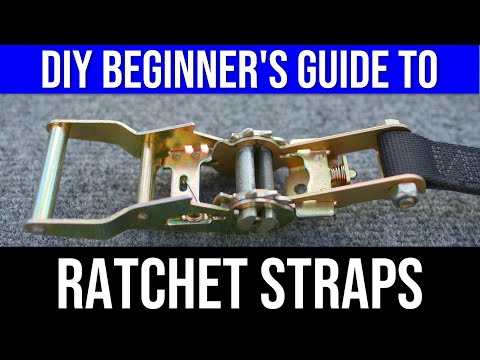
Ratchet Straps
Ratcheting straps are a ubiquitous piece of gear for securing cargo in the bed of a truck.
Consisting of a length of flat wedding that is routed through a levered, ratcheting assembly, these are far easier and quicker to use than rope or other cordage except in cases where one is very skilled with the application of hitches and knots.
To use a ratchet strap, they are typically routed over or around the cargo in such a way that it is held snugly in place against the floor or sides of the truck bed before being secured to an anchor point therein.
The slack is taken out of the strap and once snug further ratcheted down using the ratchet assembly. This will exert considerable force and tension on the load, hopefully keeping it in place.
This is truly one tool that no truck owner can go without, and you will use these constantly when hauling anything of consequence in your truck bed.

Road Flares
Signaling and marking equipment is vital for every vehicle, and especially vital for large trucks.
Being forced to pull over on the side of the road due to malfunction or accident, especially on the side of a busy road, means you and your truck will be at great risk of being struck by traffic, especially on your side of the road.
The single best thing you can do to prevent such a horrible incident is to utilize attention-getting signaling equipment, and the single best option among all the signaling supplies you could buy is traditional chemical road flares.
Highly reliable and the single most visible tool when it comes to roadside safety, these flares can be used in any environment and in all weather conditions, and their sputtering, vivid red flame cannot be missed except by the blind.
You’ll have to use a little bit of caution whenever employing these in dry conditions or wear an explosive hazard that might be present due to leaking fuel or other chemicals, but this is a small price to pay for keeping yourself or the site of an accident safe.
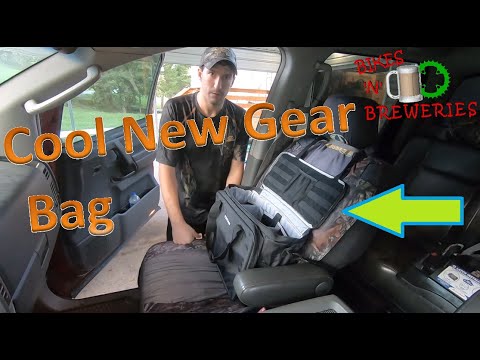
Seatback / Front Seat Organizer
Chances are the specialist items that you carry with you in your truck everyday will already have an appointed home, but for everything else, all the incidentals, the small things and the items that just seem to disappear into those voids beneath and beside the seats, you can use a seat back or front seat organizer.
Taking the form of a row of multi-purpose pouches slung on the back of either the front driver or passenger’s seat, or a seat top organizer that will secure to the front passenger seat, these are just the ticket for keeping all of those incidental items corralled and easily accessible.
Depending on your typical daily routine and how often you bring passengers along, say nothing of the trustworthiness and permissibility of your environment, you might opt for the easily removable and transportable front of the seat organizer instead of the seat back organizer which could generally advertise you as a prepared individual, a look you usually want to avoid in order to keep from attracting the wrong kind of attention.
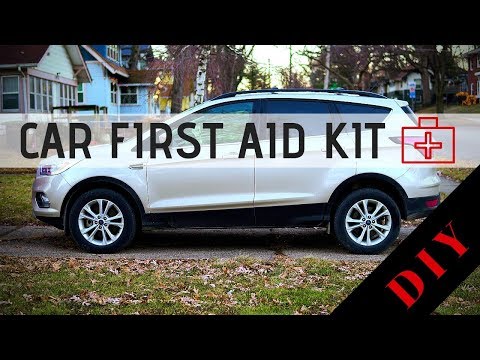
First-Aid Kit w/ Trauma Supplies
Unfortunately, hideous injuries and automobile accidents go together about as often as peanut butter and jelly.
Considering that when lives are on the line seconds count, is in your best interest to have a dedicated, thoughtfully packed first aid kit somewhere in the cabin, and make sure you’ve got the skills to use it be it on behalf of yourself, one of your loved ones or even a complete stranger if you choose to intervene.
Be honest, your first aid kit should have legitimate trauma supplies aboard. Items for treating burns, penetrating injuries, major lacerations and severe extremity hemorrhaging.
All of these injury types are quite common in automobile crashes so it makes perfect sense that you be prepared to go to work on them immediately as soon as the scene is safe.
Like many things, first aid supplies do have a shelf life and will wear out, they will also wear out quite quickly when exposed to the hostile environment of a truck interior, be it hot or cold by turns.
Make sure you check your supplies routinely, and get rid of anything that is obviously degraded or way past its use-by date.
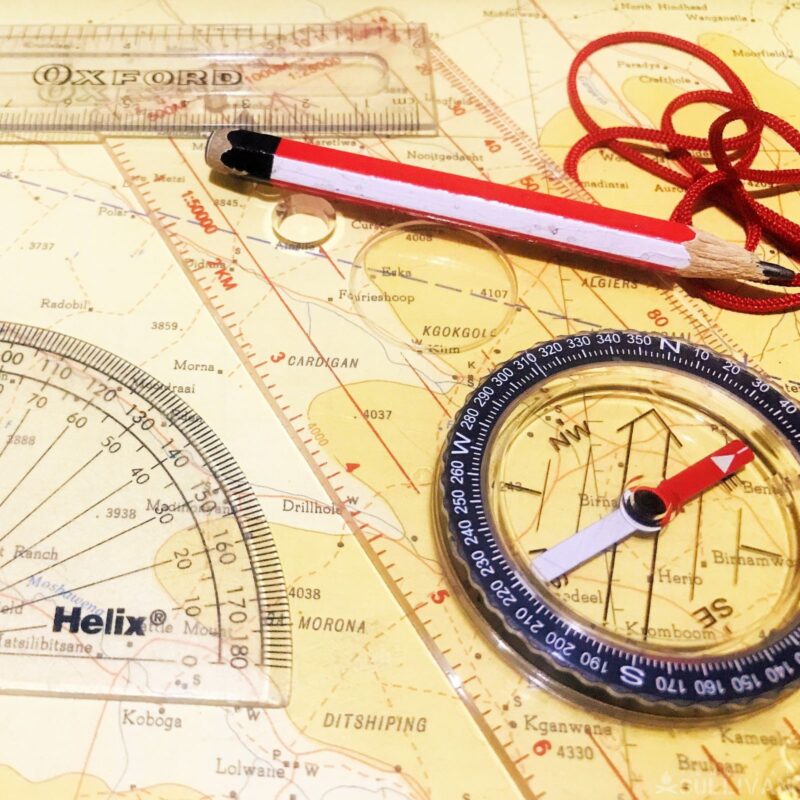
Maps and Compass
One of the most fundamental preparedness items for any prepper is the map and compass.
If we are being perfectly honest, we have all gotten a little bit lazy thanks to the preponderance of reliable, effective and accurate GPS systems built into our trucks and freely available I’m pretty much every smart device.
These devices are great, and I make use of them all the time, but that doesn’t mean that any of us should be completely inured to them.
When the networks go down, when the devices get damaged or when the power is off you’ll need an alternate method of navigation and this is where you can rely on the same thing that the rest of humanity has relied on for hundreds and hundreds of years.
Your set of maps should consist of a road atlas along with near area and regional geographic or topographical maps along with an accurate, quality field compass if you don’t make it a point to mount a vehicle compass on your dashboard.
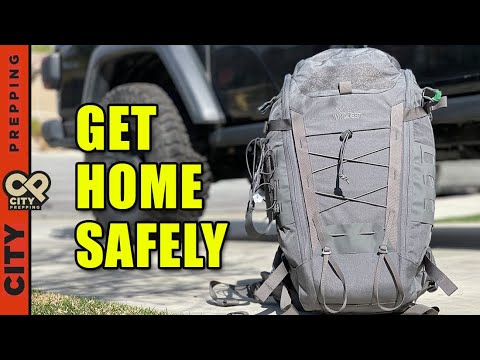
Go Bag
Your go-bag is essentially a smaller, leaner and lighter version of your big bug out bag that should be packed and ready standing by at your home.
A go-bag is sort of like a parachute that you keep in your truck, meaning it is kept loaded with all the supplies you would need to make your way home and is a form factor that lends itself to being quickly grabbed when you are bailing out of a vehicle that may literally be on fire.
This is not a kitchen sink type of pack. This is a bare-bones or essential type of preparedness kit.
It should have the minimum amount of supplies that cover your bases concerning the survival necessities, including shelter items, water, foods for quick energy and things of that nature.
whatever kind of go bag you choose must be regularly checked and rotated the same as any of your other emergency preparedness kits, and I like to make it a point to check my truck-bound go-bag whenever I check my full-size bug-out bag at home.
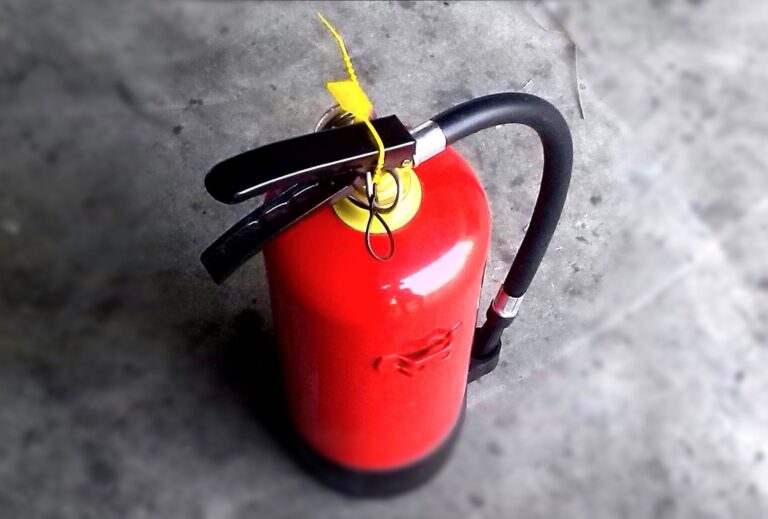
Fire Extinguisher
Automobile fires claim hundreds of lives and cause millions and millions of dollars in damage every single year, and the only chance you have of stopping such a fire is having an appropriately rated fire extinguisher on hand and within arm’s reach.
If you cannot act in seconds before the fire really brews up, your vehicle is likely going to be a total loss.
Most vehicular fire extinguishers are comparatively small and should be mounted in a bracket or some other sort of holder that will keep it available for rapid access but also hold it entirely secure in case of a crash or collision.
You definitely do not want the hardened container of a fire extinguisher flying around inside the cabin like a missile, as that will be a problem all its own!
Whichever one you select, make sure you get it tested periodically and serviced if required.
A fire in the engine bay or anywhere else on your vehicle demands an immediate and proper response if you want to have any chance of saving your truck and its contents.

What About Keeping a Long Gun in the Truck?
A conspicuous omission that some readers will doubtlessly throw a penalty flag on is that of a long gun or a so-called truck gun.
While I admire the notion that a prepper would always want to be prepared with a more capable firearm should it be required, the reality is that keeping a long gun, or any gun, in your vehicle full time is an absolute non-starter, even in the highest trust environments.
Why? Simple. Vehicles are not secure storage containers. They really aren’t secure at all, and most vehicular strong boxes capable of holding a long gun will not stop a determined thief for very long, and stashing a gun in a bag, under a seat or just out of view is damn near the same as handing it over.
Vehicle break-ins only get more and more common overtime, and no matter where you live, even in the nicest neighborhood and the nicest town, it is only nice so long as no one scummy strolls through it looking for easy loot. Don’t keep a firearm in your vehicle full time.
I can advocate for, however, keeping a sort of firearm support bag in your truck.
This bag should contain extra ammunition, feeding devices, medical supplies and other tactical tools that might be required in case you should become stranded and have to abandon your vehicle because of major civil unrest or perhaps a terror attack and just so happen to have one of your long guns with you.
Even if kept in the vehicle full time, should it get stolen, only ammunition and magazines, not a complete gun, will fall into criminal hands.
Conclusion
A pickup truck is one of the single best vehicles that any prepper could want.
Super capable, adaptable and versatile for hauling cargo or people, your pickup truck can be further improved as an everyday prepping mainstay by the inclusion of smart gear and tool picks.
Use the list above containing 15 of the best truck EDC options and outfit your pickup today.
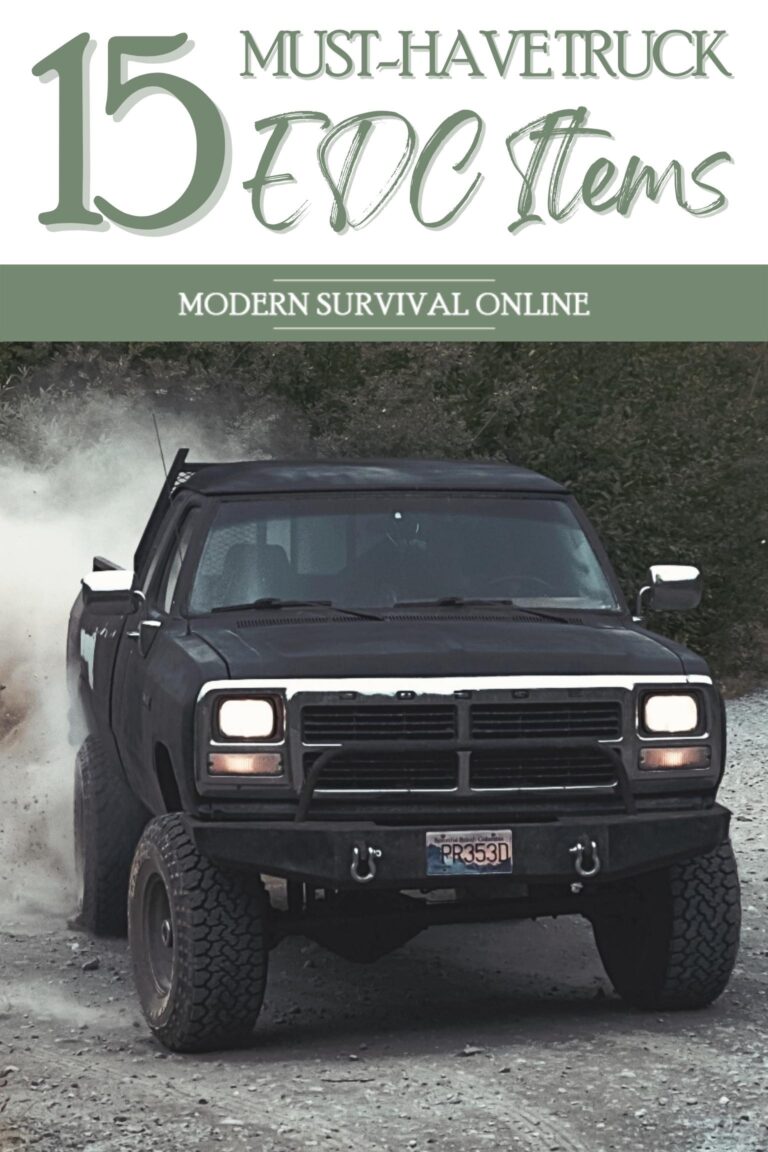
via Modern Survival Online https://ift.tt/9BlhLu3
